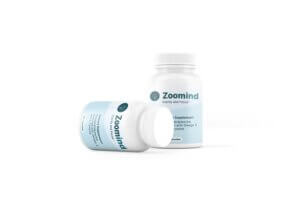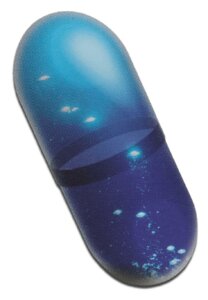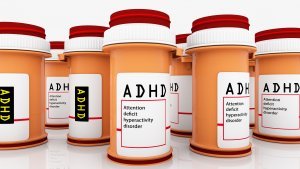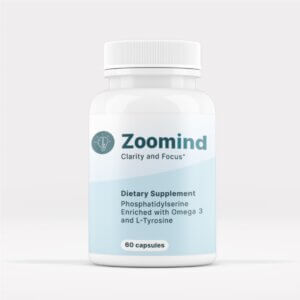Zoomind is a dietary supplement that acts as a source of essential polyunsaturated fatty acids (PUFAs) – also referred to as omega-3 fatty acids – necessary for the proper development and operation of the brain.

Zoomind contains phosphatidylserine, L-Tyrosine, and Omega-3 (eicosapentaenoic acid (EPA) and Docosahexaenoic acid (DHA). These have been highlighted as some of the most important PUFA components that can affect behavior in children that has been classified as ADHD – attention deficit hyperactivity disorder.
What is Zoomind?
Zoomind is a natural supplement that enhances focus and clarity and can help support symptoms of ADHD. Zoomind contains Phosphatidylserine, Omega 3 fatty acids, and L-tyrosine.
Saul Kaye is our chief formulator and studied pharmacy at Sydney University. After many years of experimentation and studying the effects of supplements on ADHD, Saul formulated Zoomind to increase focus and clarity in children and Adults, Saul included L-tyrosine after Dr. Andrew Huberman (Stanford) researched its effects as a dopamine precursor and found it important in ADHD for focus and attention. Improving the original formulation of PS enhanced with omega 3 to include L-tyrosine should enhance the effects of Zoomind and provide a solution for kids with ADHD who do not want to be on stimulant medication like Ritalin, Attent, and Vyvance or as adjunct therapy alongside prescription ADHD medications to reduce the dosage of the stimulant medication needed.
What is the science behind Zoomind?
An Introduction to Biological Membranes, by Professor William Stillwell of Indiana University–Purdue University in Indianapolis, describes how omega-3 fatty acids have received a great deal of attention due to their involvement in alleviating a wide variety of human afflictions, including aging and neuronal functions. Historically the primary source of PUFAs in the human diet has been oily, cold-water fish. According to Dr. Stillwell, omega-3 supplementation is currently in vogue.
Why is Zoomind preferable to eating oily fish?
The American Psychiatric Association recommends that every diet (kids and adults) should include fatty fish, like salmon and tuna — two or more times a week. They also recommend that people with “impulse control disorders,” like attention deficit hyperactivity disorder (ADHD), supplement their daily diets with at least 1 gram of fish oil. The reason: Omega-3 fatty acids help brains function better.
There is a limited selection of the right fish, which must be cold-water species such as salmon, mackerel, sardines, albacore, tuna, herring, trout, and swordfish. In many parts of the world, especially in areas far from the oceans, these fish are expensive and not always available.
Some of the most prominent side-effects of ingesting PUFA through eating fish are fishy breath and indigestion. Less well-known is the danger of toxic intake of mercury and lead from fish coming from polluted waters. Although tolerance levels for a daily intake of these metals have been set, they generally refer to average fish consumption, not to the higher levels required to get sufficient PUFAs through the food intake.
What are the known side effects or warnings for Zoomind?

Taking omega-3 supplements in the form of fish oil may cause specific side effects, such as bad breath, heartburn, and nausea. That’s why Zoomind is the preferred method since it is taken in caplets along with food. If one dosage is missed – it can be made up the next day with up to 4 capsules.
There are few expected side-effects of a dietary supplement like Zoomind – everything it contains is natural. Regularly recommended dosages are well below the proven and approved tolerance levels for PUFA set by the FDA.
So far, the only restriction is to avoid usage by pregnant women and breastfeeding mothers. This is because there have not been enough studies including these two groups to say that they enjoy the same degree of safety as all other people.
The omega-3 fatty acids components EPA and DHA also act as mild blood thinners. If you are already taking some anticoagulants, talk first with your pharmacist or healthcare provider to adjust the dosages.
Occasionally, side effects like headaches, abdominal pain, dry and itchy skin have been reported, and very rarely others like tics, nausea, insomnia, or hyperactivity. If you see any of these, stop using Zoomind immediately and consult with your medical practitioner.

What are the possible interactions of Zoomind with other medications?
There are few known interactions with drugs that are regularly prescribed for children and teenagers.
For adults, these are more known possible interactions, which are:
Anticoagulants such as warfarin, designed to slow down blood clotting. It’s possible that taking Zoomind supplements with them could raise the risk of spontaneous bleeding.
Antiplatelet drugs are used to prevent clumping of platelets to reduce the chance of strokes. The most common antiplatelet is simple aspirin. Taking Zoomind along with anti-platelets may require adjustment of the dosages – talk to your pharmacist.
Some other herbs and supplements like Ginkgo biloba specifically act as blood thinners, so taking Zoomind with both the herb and a medication may not be advisable.
Zoomind may slightly decrease blood pressure, so you should take care if you are already taking medication to lower pressure. There are many different types of blood pressure drugs, angiotensin II receptor blockers; ACE inhibitors; and beta blockers. Be sure to talk to your pharmacist or doctor before adding Zoomind to your diet.

Some oral contraceptives drug might interfere with how PUFAs interact with triglycerides, making Zoomind less effective. The same thing goes for some weight-loss drugs that act to decrease the absorption of PUFAs. In this case, your should take Zoomind and the drug at least two hours apart.
PUFAs can reduce vitamin E levels, so if you already suffer from any deficiency, talk to your pharmacist or healthcare professionals about a vitamin supplement.
Final thoughts
Zoomind is a treatment for children struggling with symptoms of ADHD. Although there are very mild possible side effects, which we have identified here, it’s important to remember that the standard alternatives of prescription stimulants have a much longer list of known adverse effects, including weight loss, decreased appetite, irritability, insomnia, headache and stomachache. Zoomind is a mild, natural and easy alternative. Always remember to discuss this with your pharmacist and healthcare providers before making any changes to your or your child’s treatments.








